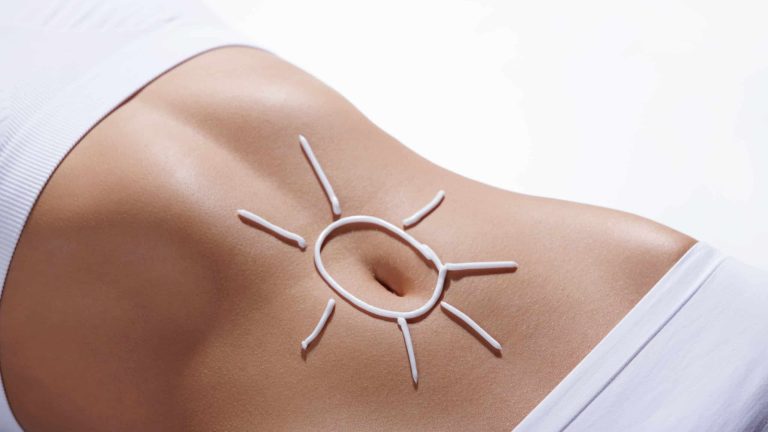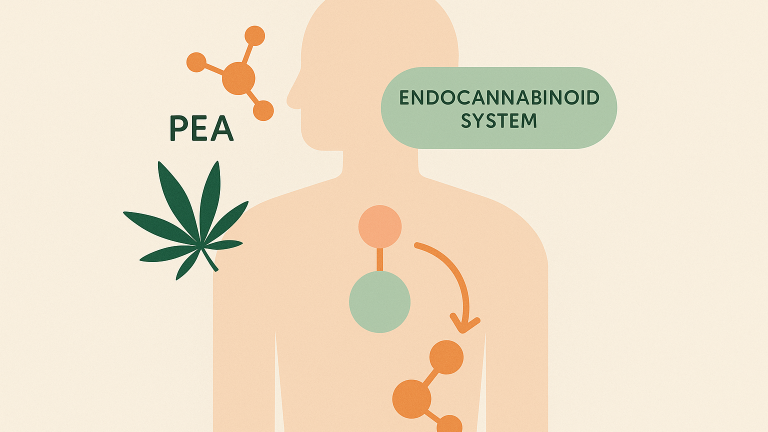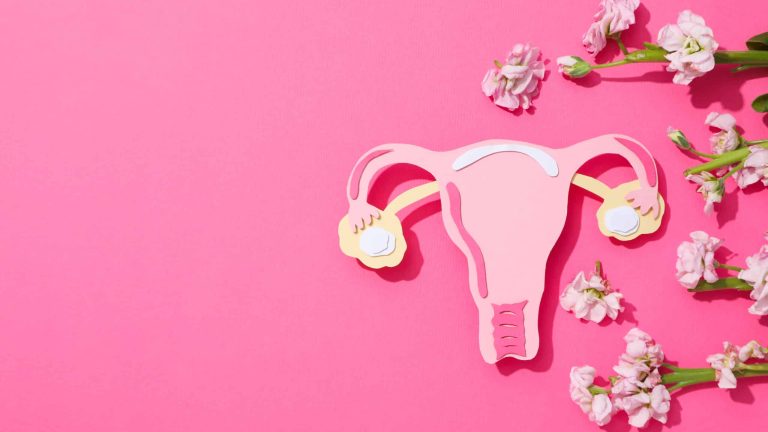Despite the name, vitamin D isn’t actually a vitamin in the traditional sense — it’s a hormone. More specifically, it’s a fat-soluble steroid hormone that influences the expression of over 200 genes. It plays a key role in regulating the immune system, reducing inflammation, modulating estrogen activity, and supporting cellular repair. All of these functions are directly relevant to women with endometriosis.
Vitamin D is produced in the skin when it’s exposed to UVB rays from sunlight. It can also be obtained from certain foods like fatty fish (salmon, mackerel, sardines), egg yolks, and fortified products. However, even with a healthy diet, many people — especially those living in northern climates — don’t get enough.
What the research says about vitamin D and endometriosis
Several studies have found a correlation between low vitamin D levels and the presence or severity of endometriosis. While researchers are still exploring whether low vitamin D causes endometriosis or simply worsens it, the connections are striking:
Women with endometriosis are more likely to have low serum vitamin D compared to women without the condition. One meta-analysis found significantly lower levels in women with endometriosis across multiple studies.
Vitamin D has anti-inflammatory and immunomodulatory effects — both of which are relevant, since endometriosis is increasingly recognized as an inflammatory and immune-related disease.
It may reduce lesion growth. In animal models and in vitro studies, vitamin D has been shown to inhibit the proliferation of endometrial cells and reduce the development of new lesions.
It influences estrogen metabolism. Since endometriosis is an estrogen-driven condition, vitamin D’s role in modulating estrogen synthesis and receptor expression may offer additional benefit.
That said, not all studies agree on the extent of these benefits, and large-scale clinical trials are still limited. But the trend toward a positive association is strong enough that many experts recommend screening and correcting low levels in women with endo.
What counts as “optimal” vitamin D?
In the U.S., vitamin D levels are typically measured in ng/mL; in Canada and other parts of the world, nmol/L is used. Here’s how they translate:
Deficient: Under 20 ng/mL (50 nmol/L)
Insufficient: 20–30 ng/mL (50–75 nmol/L)
Optimal: 30–50 ng/mL (75–125 nmol/L)
Some experts suggest that for immune or inflammatory conditions, including endometriosis, aiming for the upper end of the optimal range — around 40–60 ng/mL (100–150 nmol/L) — may be beneficial.
But vitamin D needs aren’t one-size-fits-all, which brings us to the next point.
Why testing matters: Skin tone, genetics, and location all play a role
Your ideal vitamin D level — and how much you need to reach it — depends on several factors:
Genetic polymorphisms: These are small inherited variations in your DNA that can affect how your body converts, transports, or uses vitamin D. For example, variants in the VDR or GC genes may mean you need more vitamin D than someone else to get the same biological effect.
Skin tone: Melanin reduces the skin’s ability to produce vitamin D from sunlight. That means individuals with darker skin often need longer sun exposure — or higher supplement doses — to reach optimal levels.
Geography and lifestyle: If you live in northern regions (like much of Canada or the northern U.S.), wear sunscreen daily, or spend most of your time indoors, your sun-induced vitamin D production is likely minimal, especially in winter.
For all these reasons, testing is essential. A simple blood test (25-hydroxyvitamin D) can help you know where you stand and guide safe, personalized dosing.
How to improve your vitamin D levels safely
If your levels are low or borderline, here are science-backed ways to restore them:
1. Sunlight exposure
Aim for 10–30 minutes of mid-day sun exposure on bare skin a few times a week, depending on your skin tone and latitude.
Avoid burning. More time isn’t always better — once your skin makes enough, excess UV doesn’t increase vitamin D but does increase skin damage.
2. Dietary sources
Fatty fish (e.g., salmon, sardines)
Cod liver oil
Egg yolks
Fortified foods (e.g., some dairy, plant milks, cereals)
3. Supplementation
Vitamin D3 (cholecalciferol) is the preferred form.
Always take it with fat for better absorption.
Some individuals find daily doses of 2000–4000 IU (or more if severely deficient) helpful — but your actual needs should be based on bloodwork.
- Many practitioners recommend pairing vitamin D3 with vitamin K2, especially when supplementing regularly. K2 helps direct calcium into the bones and away from arteries and soft tissues, which may support long-term vascular health.
Co-factors like magnesium are often needed to activate vitamin D in the body. If you experience muscle cramps, that could be a sign you’re low in magnesium.
Avoid mega doses unless guided by a healthcare provider.
4. Retesting
Final thoughts: Worth testing, easy to fix
Vitamin D alone won’t cure endometriosis, but it may help shift the terrain in your favour. As a hormone involved in immunity, inflammation, and estrogen regulation, vitamin D plays a far-reaching role in the body — and low levels are common among women with endo.
The good news? It’s affordable to test, simple to supplement, and often a missing piece of the puzzle. Whether you live in a cloudy city or just haven’t had your levels checked, this might be the right time to ask your provider for a test and take a step toward better balance.





